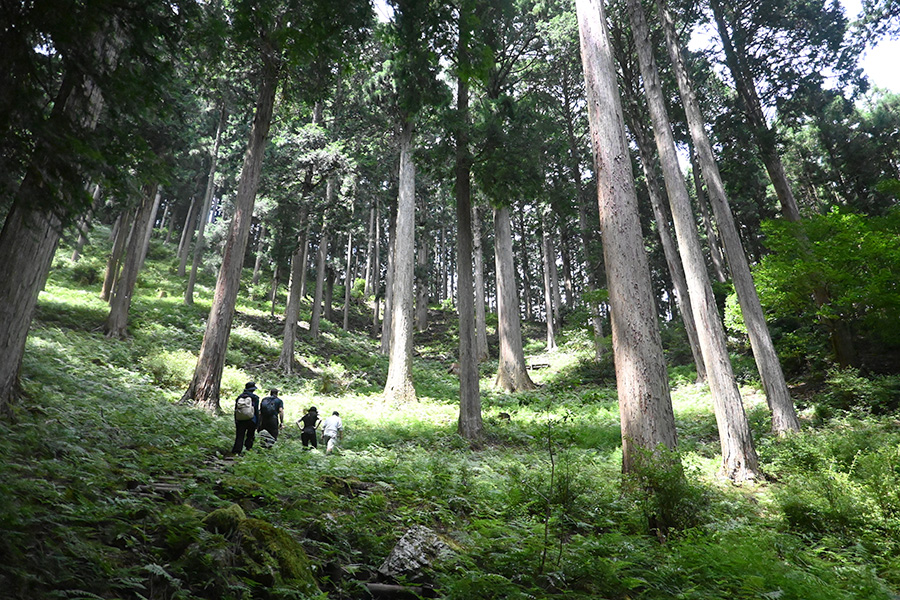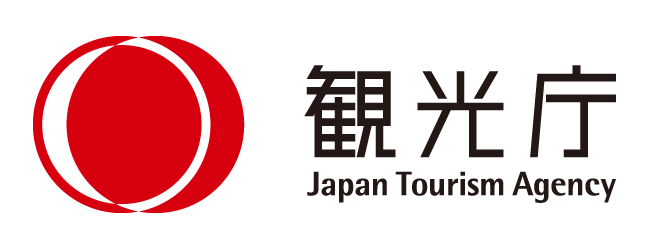Yoshino Forestry

In Kawakami, where around 95 percent of the land is covered in forest, timber has always been part of the economy. For many centuries, the village residents foraged for wood and let the forest regrow naturally. This small-scale subsistence forestry was adequate until the Muromachi period (1392–1573), when there was a countrywide rise in demand for lumber. The people of Kawakami found that by controlling the shape, size, and species of the trees through careful management, they were able to produce far more timber. Their efforts created one of the country’s first large-scale manmade forests. In fact, Japan’s oldest surviving record of a planted forest, dated to roughly 1500, gives the forest’s location as “Kawakami Village, Yoshino.” Even today, three 400-year-old cedar trees grow in the Shimotako Planted Forest, standing as unharvested giants in a section of the forest established half a millennium ago.
Early History, from Castles to Casks
In the 1500s and 1600s, timber from the Yoshino area was primarily sold as building materials for temples and castles, which required tall, straight pillars. Records from the latter 1500s show that wood from Yoshino was used in the construction of Osaka Castle. By the eighteenth century, however, the main use of Yoshino timber had shifted to the production of sake casks (tarumaru). Two properties of Yoshino lumber made it prized for this purpose: The wood had few knots, which made it less prone to leaks, and it had a very high ratio of heartwood (the older, non-living core) to sapwood (the outer, living rings). Heartwood is naturally denser than sapwood, and it resists decay. Yoshino cedar became so popular as wood for casks that the name tarumaru became synonymous with “Yoshino lumber.” Casks continued to be the industry’s primary market until the mid-twentieth century.
New Methods
Originally, the characteristics of Yoshino cedar (density, strength, and knot-free wood) were created by Kawakami’s natural environment, which forced the trees to grow slowly. The trees’ natural traits were further refined beginning in 1898, which marked a new milestone in Yoshino forestry. Kawakami-born Dogura Shōzaburō (1840–1917), a member of the local lumber association and a nationally known businessman and philanthropist, formalized a series of cultivation techniques to increase the quality of Yoshino timber. That method involved three elements: close planting, repeated thinning, and delayed harvesting.
In a normal lumber plot, a single hectare of land was used to grow around 3,000 trees. Per Dogura’s method, trees were planted only 1 meter apart, packing 10,000 saplings into each hectare. This created fierce competition for sunlight, forcing the young trees to grow straight up toward the sky. Cedars grown this way also sprouted fewer limbs due to the shade cast by neighboring trees. As a result, Yoshino cedars and hinoki cypresses grew tall, straight, and without branches (which would leave knots in the lumber). The competition for sun also caused the trees to grow very slowly. Slow-growing trees have closely spaced growth rings and denser, harder wood.
The trees would never reach full size if left so close together, so Dogura’s method included periodic thinning. For the first three to four decades after planting, trees were thinned every 4 to 5 years. Rotten or misshapen trees were removed to create more space for the others. After that, the trees were thinned less and less frequently. In this way, each tree was gradually given more light and more space, keeping its growth rate steady. The final element of Dogura’s method was to wait twice as long to harvest. Trees grown elsewhere were typically cut down at 40 to 50 years of age, but Yoshino trees were harvested after 80 to 100 years.
